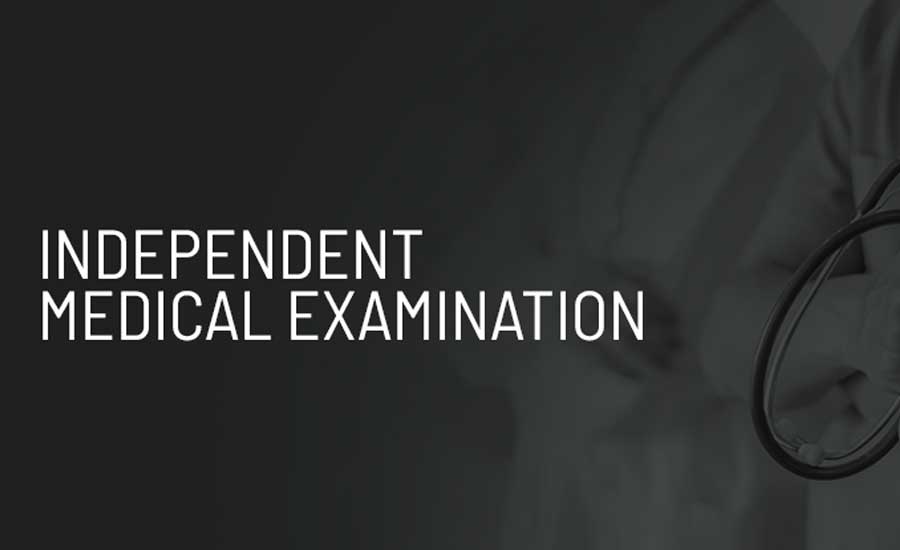What are some common occupational illnesses or injuries?
7066931124 • November 4, 2022
Common Occupational Illnesses or Injuries
An occupational disease under the Illinois Occupational Disease Act
requires documentation to prove the elements of the disease claim. An occupational disease is any health condition or disorder which arises out of exposures in the workplace. What should you do if you plan on pursuing an occupational disease claim under the Illinois Occupational Disease statute?
1. Notify your employer; include in the notice the date, time, and place of illness, the duration of your exposure, and identify the disease causing substance. A notice form may be available on the Illinois Workers Compensation Commission’s website.
2. Obtain your employer’s occupational injury or illness insurance company information including the name of the company, address, and phone numbers. Provide a copy of the notice to the insurance company of your employer.
3. Prepare a list, in chronological order by date, of your medical providers including all doctors, hospitals, clinics, and other health care providers that provided treatment to you for the condition.
4. Request and Obtain a copy of your medical records from each provider listed in 3, above.
5. Document the disease causing substance (chemical, product, or substance). If the substance is a chemical, obtain a copy of the label and photograph any warnings of hazards on the product label. If there is a container, can or box, obtain a photograph of the product label that identifies the manufacturer and any warnings of hazards. If it’s a hearing loss claim, request noise readings from the employer and OSHA. If it’s coal dust, obtain your job classification history to show you worked in dusty areas of the mine. Properly identifying the substance is very important. Some substances are many compounds and may contain multiple disease causing substances.
6. Document the Known Hazards of the Disease causing substance or product from the identification in 5, above. A Material Data Service Sheet MSDS may be available on line. A MSDS sheet is a technical document that lists the hazardous ingredients of a product, it’s composition, and effects on human health.
7. Document the Known Composition from consulting the website of the manufacturer of the product. Print any published information from the manufacturer’s website that identifies the exposure substances.
8. Duration of Exposure: obtain your work record including any job classification history that proves the dates or periods of time you were exposed to the substance in the workplace. Obtain witnesses such as co-workers who can testify you were exposed to the substance in the workplace.
NOTE: Accurate identification of the disease causing substance, and the duration of exposure to that substance are important to prove medical causation.
9. Obtain a causation statement from a medical expert familiar with the disease and who will testify on causation and do the following: 1. Provide all past medical records to the medical expert; 2. Provide the accurate identification of the alleged disease causing substance or product to the medical expert; 3. Provide the duration of exposure period including any employment records or job classification histories to the medical expert; 4 obtain a medical opinion from the expert that states in their opinion, if you were exposed to the disease causing substance in the workplace, over the period of dates or the duration of your exposure, this “could” or “might” Vance caused or contributed to cause or aggravated the diagnosed disease medical opinion. If you do not have a medical expert, consult with an attorney. If you are treating with a doctor that specializes in treatment for a particular disease, they may serve as an opinion expert.
10. Formally file your claim before the statute of limitations period expires with the Illinois Workers Compensation Commission.
Ron D. Coffel has represented workers with occupational disease claims for nearly 35 years. He is among the highest rated and leading Illinois occupational disease lawyers.
1. Notify your employer; include in the notice the date, time, and place of illness, the duration of your exposure, and identify the disease causing substance. A notice form may be available on the Illinois Workers Compensation Commission’s website.
2. Obtain your employer’s occupational injury or illness insurance company information including the name of the company, address, and phone numbers. Provide a copy of the notice to the insurance company of your employer.
3. Prepare a list, in chronological order by date, of your medical providers including all doctors, hospitals, clinics, and other health care providers that provided treatment to you for the condition.
4. Request and Obtain a copy of your medical records from each provider listed in 3, above.
5. Document the disease causing substance (chemical, product, or substance). If the substance is a chemical, obtain a copy of the label and photograph any warnings of hazards on the product label. If there is a container, can or box, obtain a photograph of the product label that identifies the manufacturer and any warnings of hazards. If it’s a hearing loss claim, request noise readings from the employer and OSHA. If it’s coal dust, obtain your job classification history to show you worked in dusty areas of the mine. Properly identifying the substance is very important. Some substances are many compounds and may contain multiple disease causing substances.
6. Document the Known Hazards of the Disease causing substance or product from the identification in 5, above. A Material Data Service Sheet MSDS may be available on line. A MSDS sheet is a technical document that lists the hazardous ingredients of a product, it’s composition, and effects on human health.
7. Document the Known Composition from consulting the website of the manufacturer of the product. Print any published information from the manufacturer’s website that identifies the exposure substances.
8. Duration of Exposure: obtain your work record including any job classification history that proves the dates or periods of time you were exposed to the substance in the workplace. Obtain witnesses such as co-workers who can testify you were exposed to the substance in the workplace.
NOTE: Accurate identification of the disease causing substance, and the duration of exposure to that substance are important to prove medical causation.
9. Obtain a causation statement from a medical expert familiar with the disease and who will testify on causation and do the following: 1. Provide all past medical records to the medical expert; 2. Provide the accurate identification of the alleged disease causing substance or product to the medical expert; 3. Provide the duration of exposure period including any employment records or job classification histories to the medical expert; 4 obtain a medical opinion from the expert that states in their opinion, if you were exposed to the disease causing substance in the workplace, over the period of dates or the duration of your exposure, this “could” or “might” Vance caused or contributed to cause or aggravated the diagnosed disease medical opinion. If you do not have a medical expert, consult with an attorney. If you are treating with a doctor that specializes in treatment for a particular disease, they may serve as an opinion expert.
10. Formally file your claim before the statute of limitations period expires with the Illinois Workers Compensation Commission.
Ron D. Coffel has represented workers with occupational disease claims for nearly 35 years. He is among the highest rated and leading Illinois occupational disease lawyers.

For a disease to be recognized as an occupational disease under the Illinois Occupational Disease Act , the connection of the disease to the workplace is proved by establishing a link between the exposure to the alleged disease causing substance and the work activities of the contracted worker. The best Illinois workers compensation and occupational disease lawyers will know that there is a higher incidence or frequency of disease contraction and disorders in certain occupations. The disease or illness, in higher incident type employments are considered “germane” to certain types of workers in this occupations. What follows is a list of some occupational diseases; Coal workers pneumoconiosis . This obstructive lung disease is coming among underground coal miners who are exposed to dusty conditions in the coal mines. Meat cutters tendon disorders . These are common upon meat cutters who must us various joint postures in cutting meat. Electricians tendon disorders, nerve entrapments, trigger fingers, joint dysfunction, and asbestos exposures. Pipe fitters and industrial plumbers, tendon disorders, asbestos exposures, and chemical exposures to compounds and glue substances. Firefighters, EMT, and first responders : post traumatic stress disorders, infectious disease exposures from emergency treatment. Hearing loss and tinnitus is common among factory workers and among workers who are exposed at work to loud noise of sufficient level and duration. In 2010, a new rare disease of bronchialitis obliterates (cement lung) was recognized as an occupation disease among workers who inhaled fumes of popcorn butter flavoring. Asbestos exposure is a known cause of lung diseases. Chemical exposures are a known cause of asthma and lung diseases and skin diseases such as dermatitis. Cancer and other lung diseases are common in workers exposed to asbestos. There is no specific limitation on what diagnosed disease constitutes an occupational disease under Illinois law. If you have contracted a disease and suspect it may have been caused by exposures at work, then follow the steps in our section “What to do if you contract an occupational disease.” Ron D Coffel is a peer reviewed workers compensation lawyer that has been awarded the distinction of leading lawyer that regularly handles Illinois workers compensation and occupational disease claims in Illinois.

Generally, the employee must file a workers compensation claim within 3 years after the injury, death or disablement, or within 2 years of the last payment of temporary total disability of a medical bill, whichever is later. In the event of minority, the statute does not start until the minor reaches the age of 18. A disability may toll the statute to extent it beyond these dates. The Illinois Administrative Code establishes different deadlines for some specific conditions. Asbestos exposure must be filed within 25 years of the last date of exposure. If the injury is fatal, the employee's representative must file within three years of the death, or within two years of the last date of payment of compensation.

The Workers Compensation Act requires the employer to pay for all medical care that is causally related to the injury that resulted in the claim, including: Any care that is required to diagnose, relieve, or cure the effects of the injury; Any first aid, and/or emergency treatment required as a result of the injury to the employee; All medical, surgical, and hospital expenses that are incurred by the employee in the course of curing or relieving the employee of the effects of the injury; Any treatment, instruction, or training required to rehabilitate the injured employee physically, mentally, or vocationally, including maintenance costs and incidental expenses.

Temporary total disability is the period of time beginning with the injury and ending when the employee reaches maximum medical improvement (MMI). MMI occurs when the employee is as far recovered or restored to his or her previous condition as the injury will allow. You are entitled to payment of TTD for the duration of the temporary total disability.







Share On: